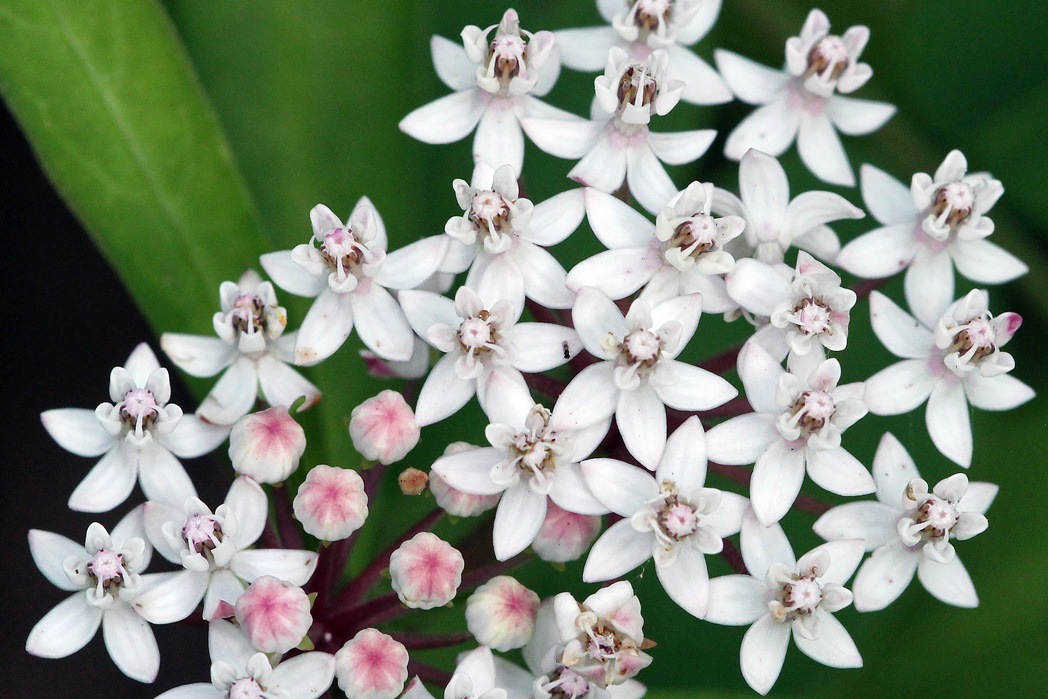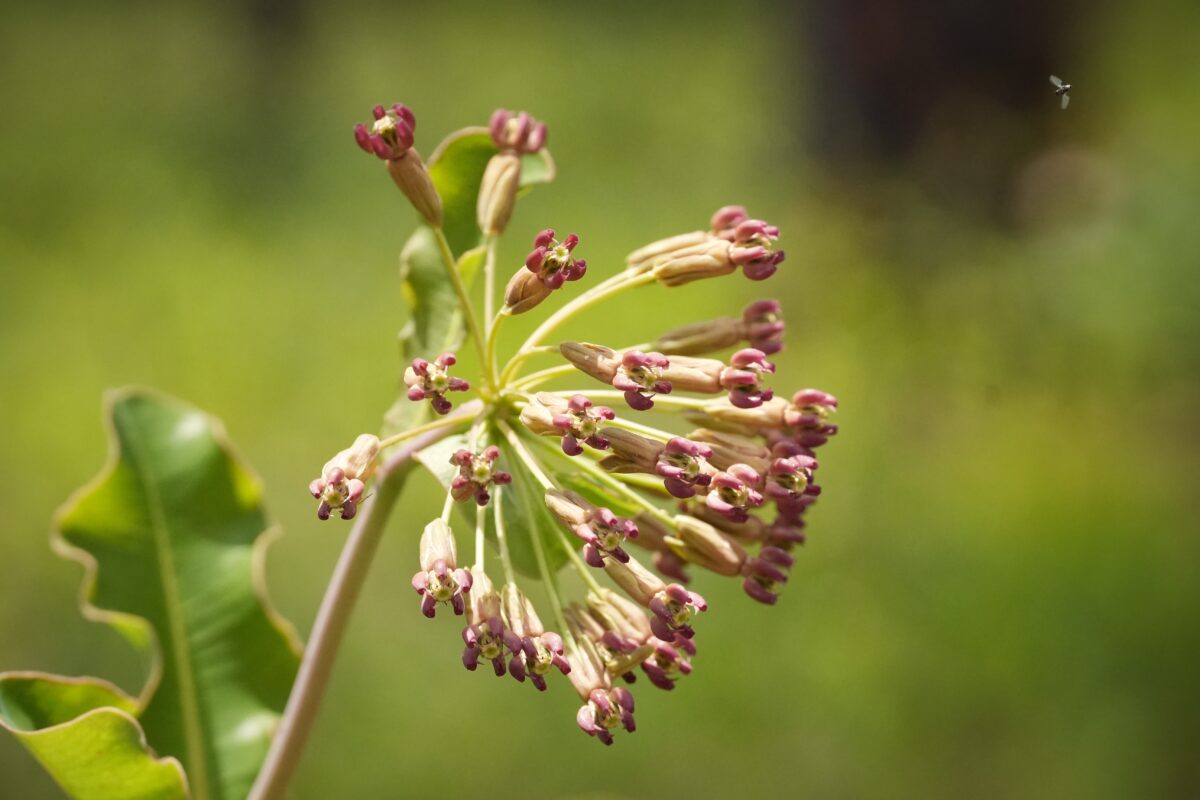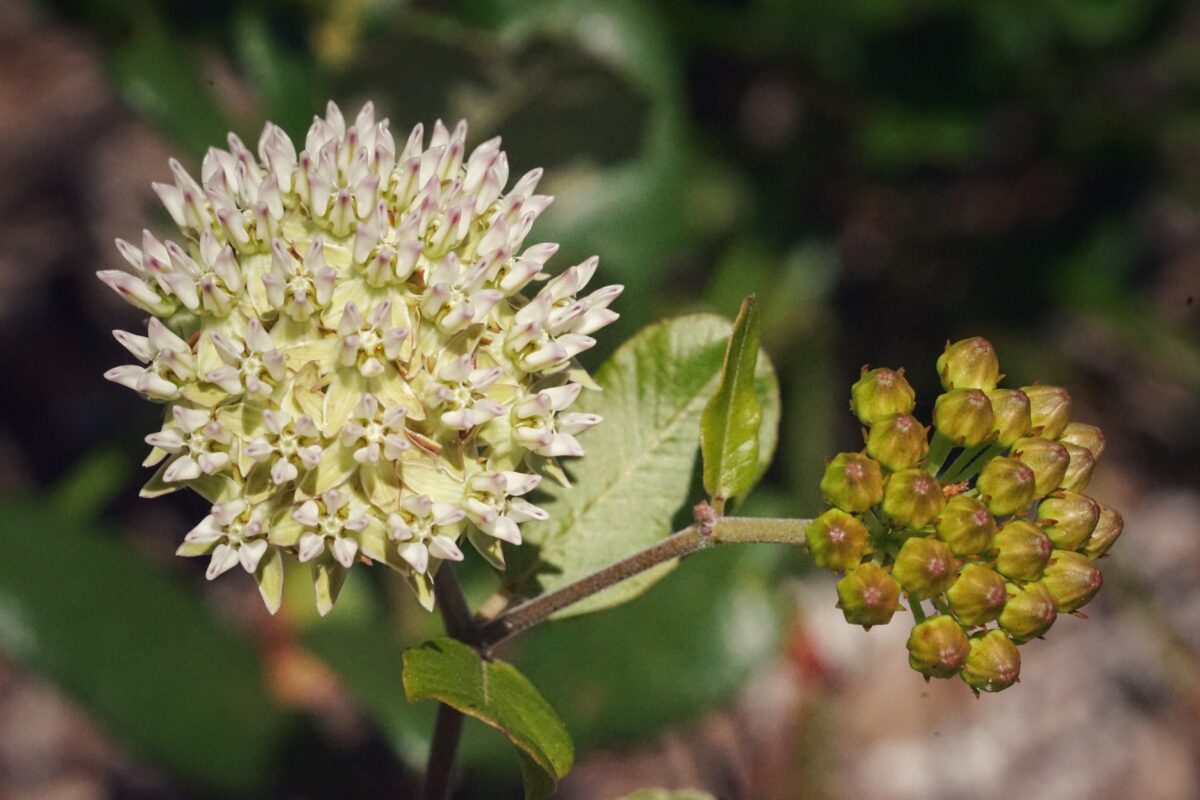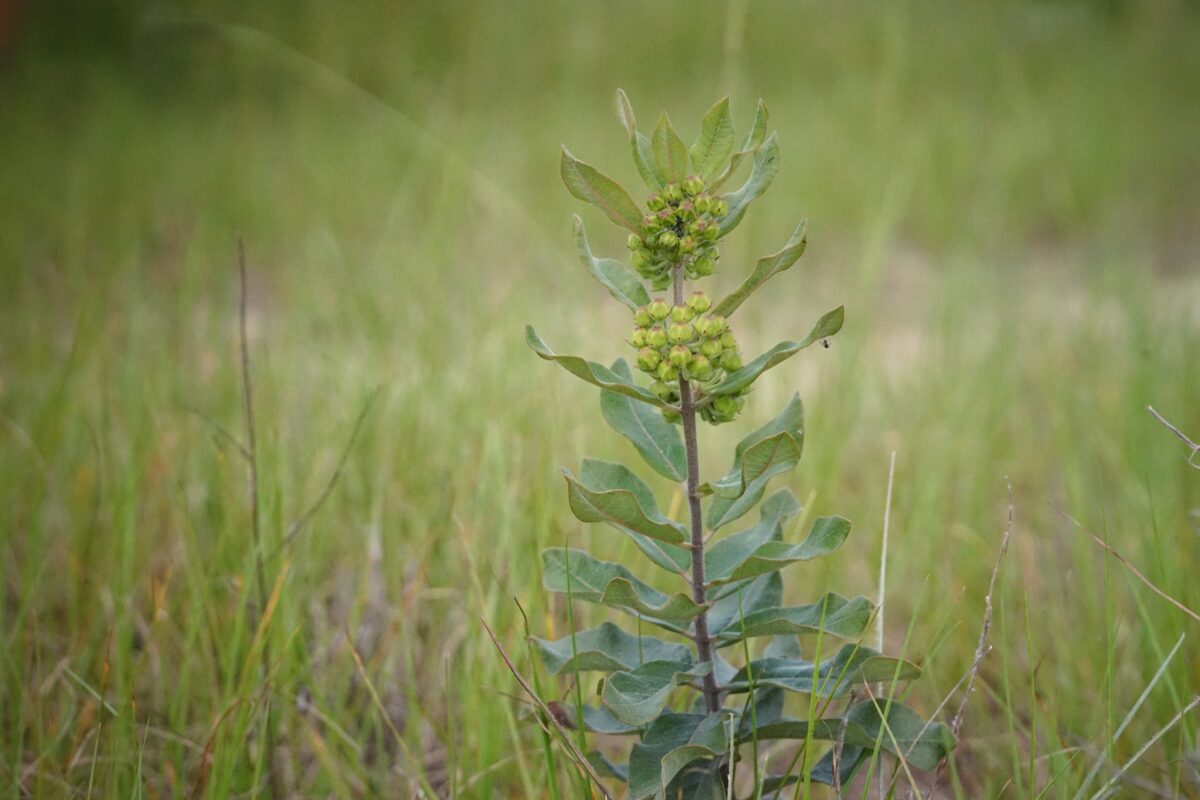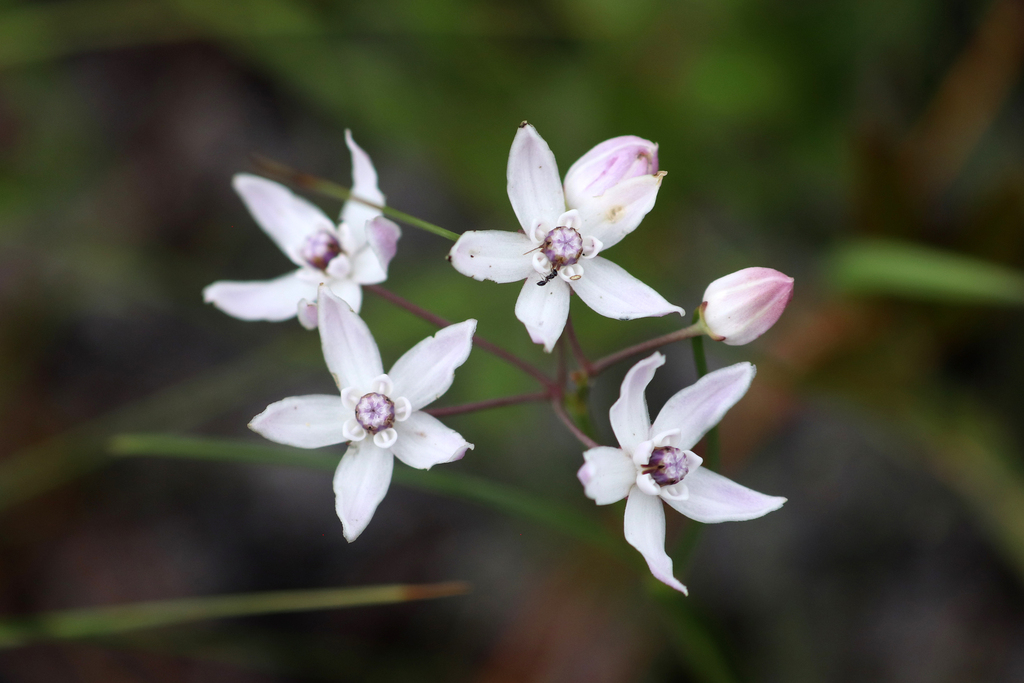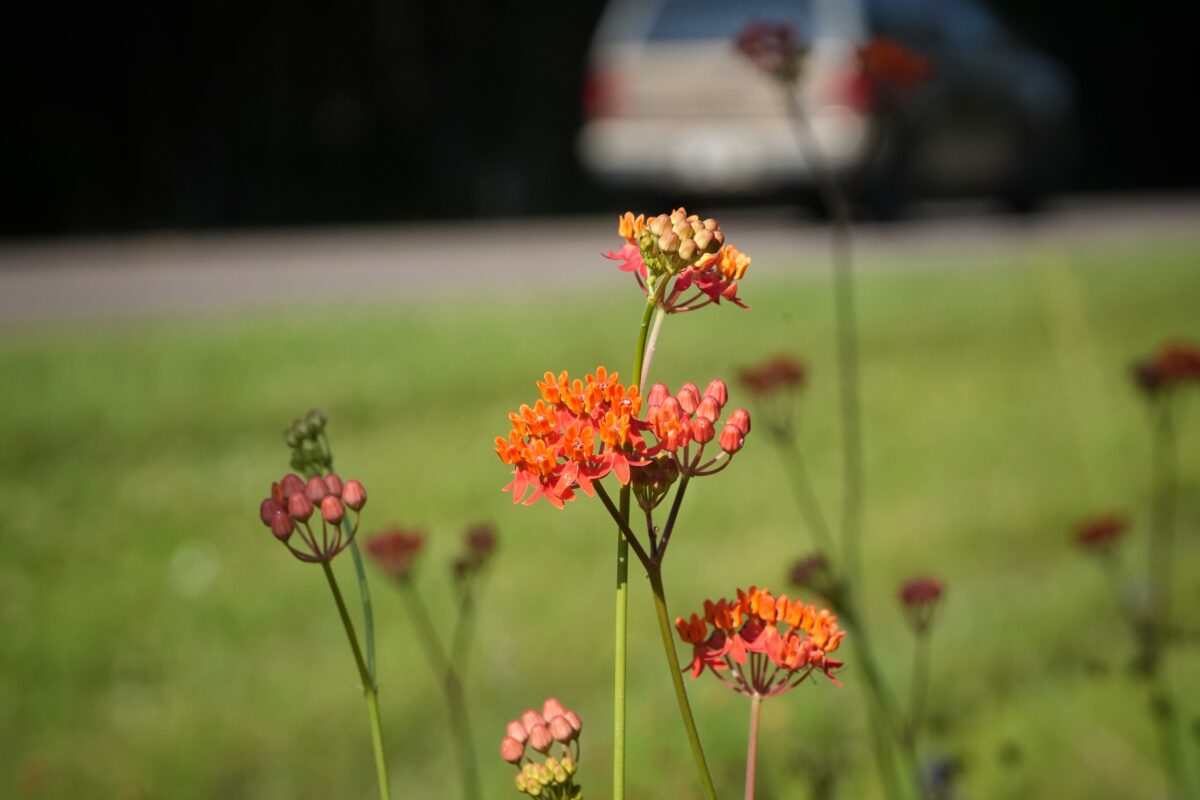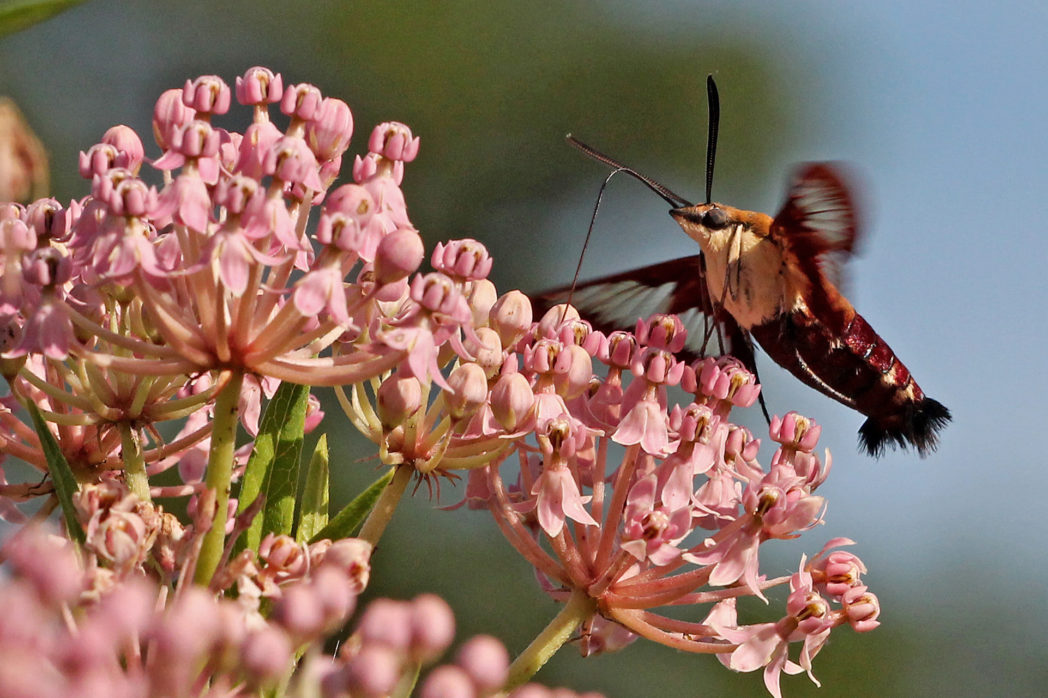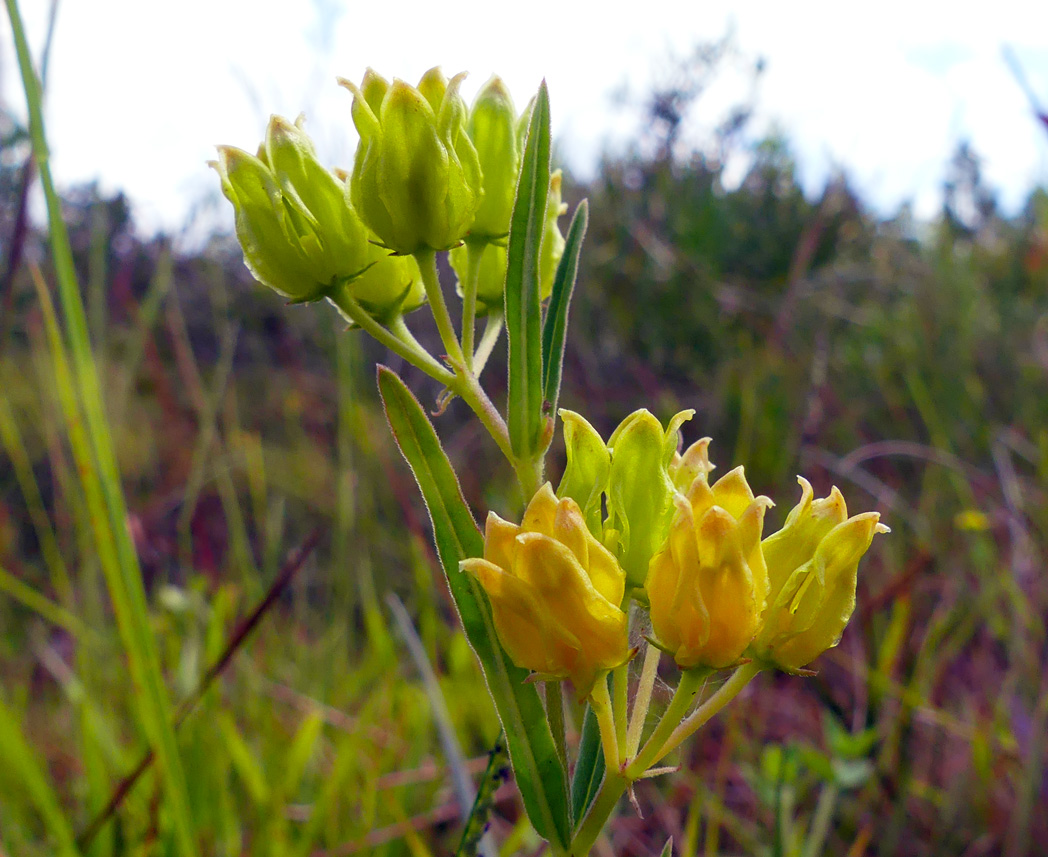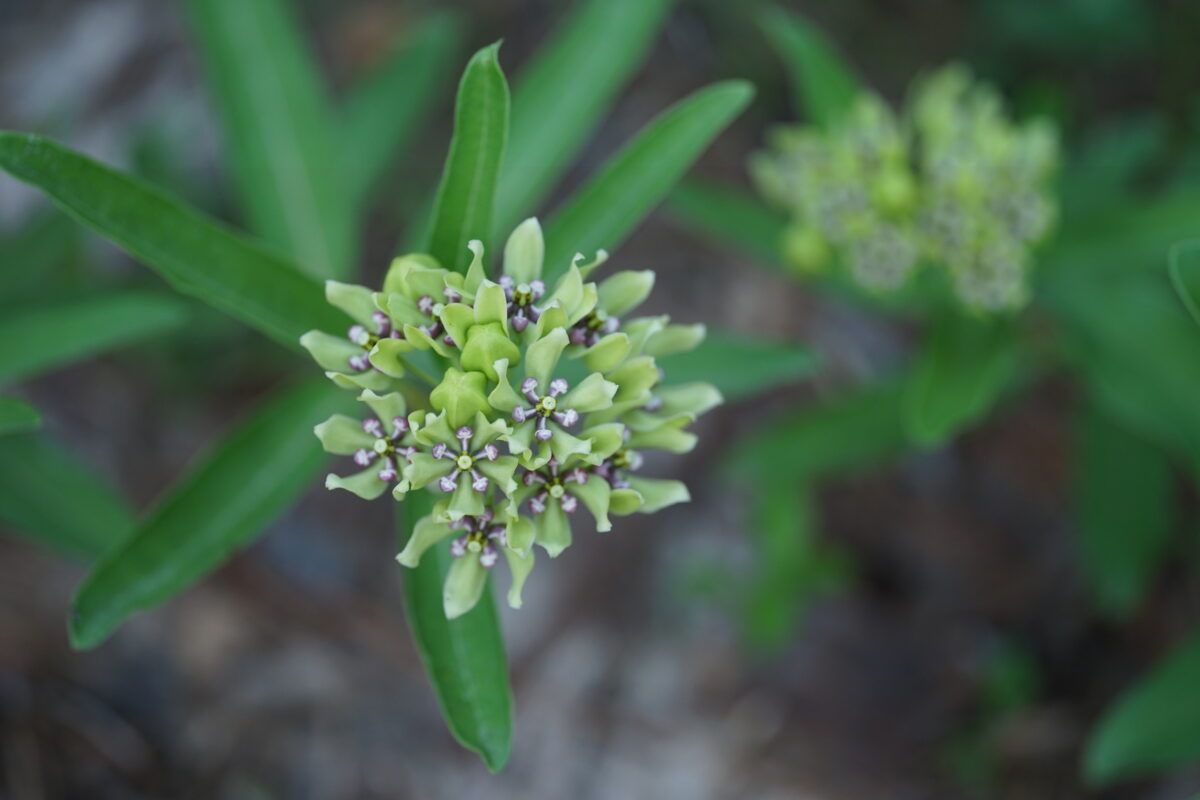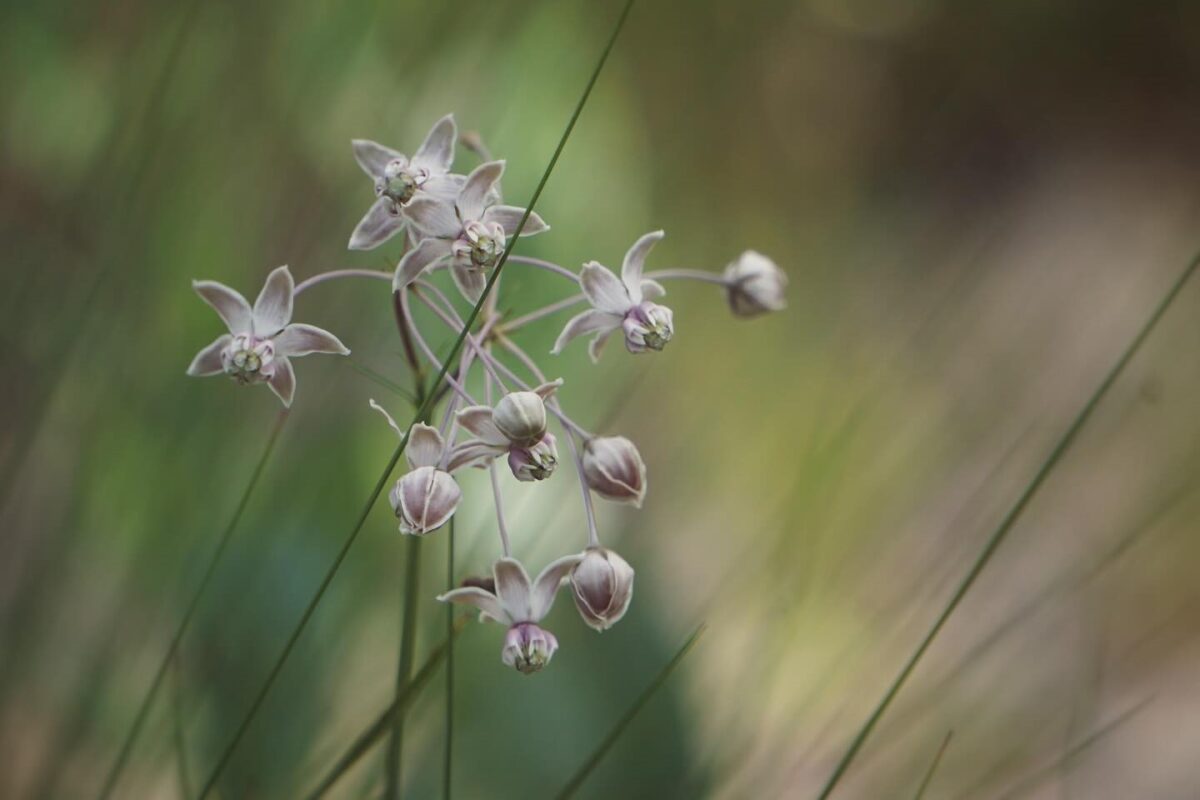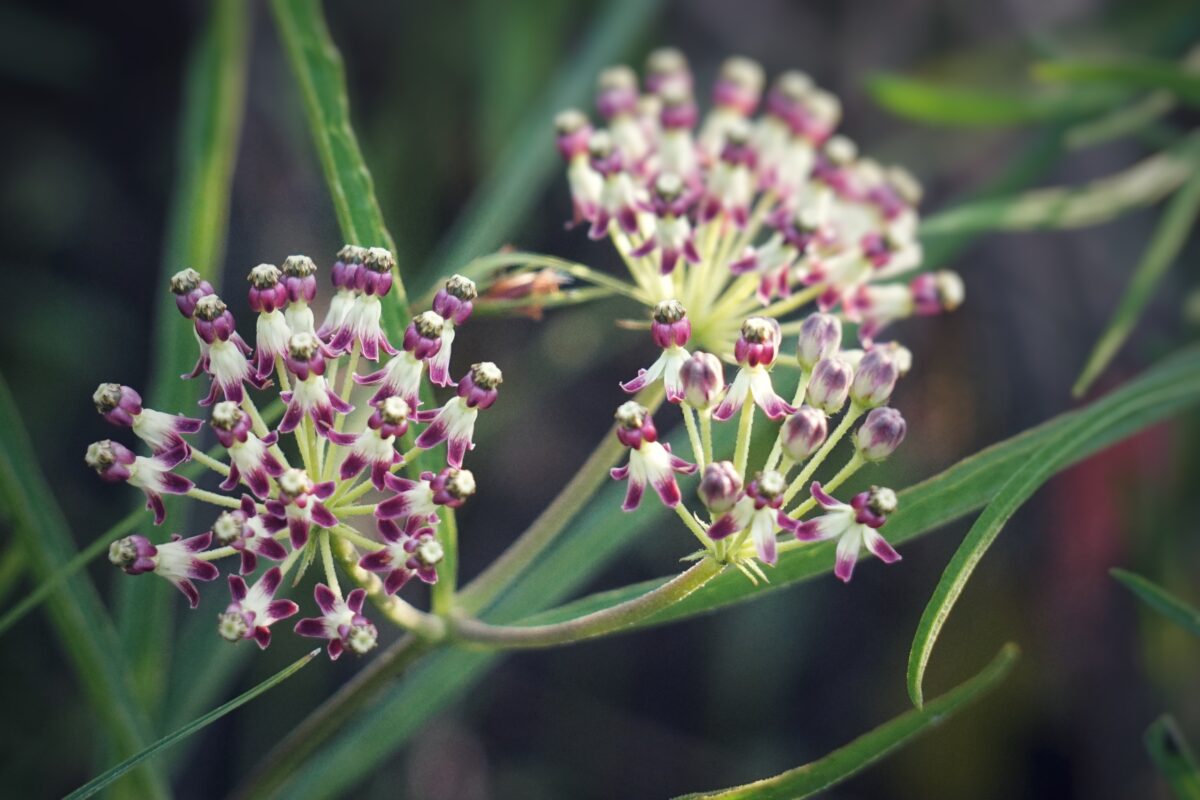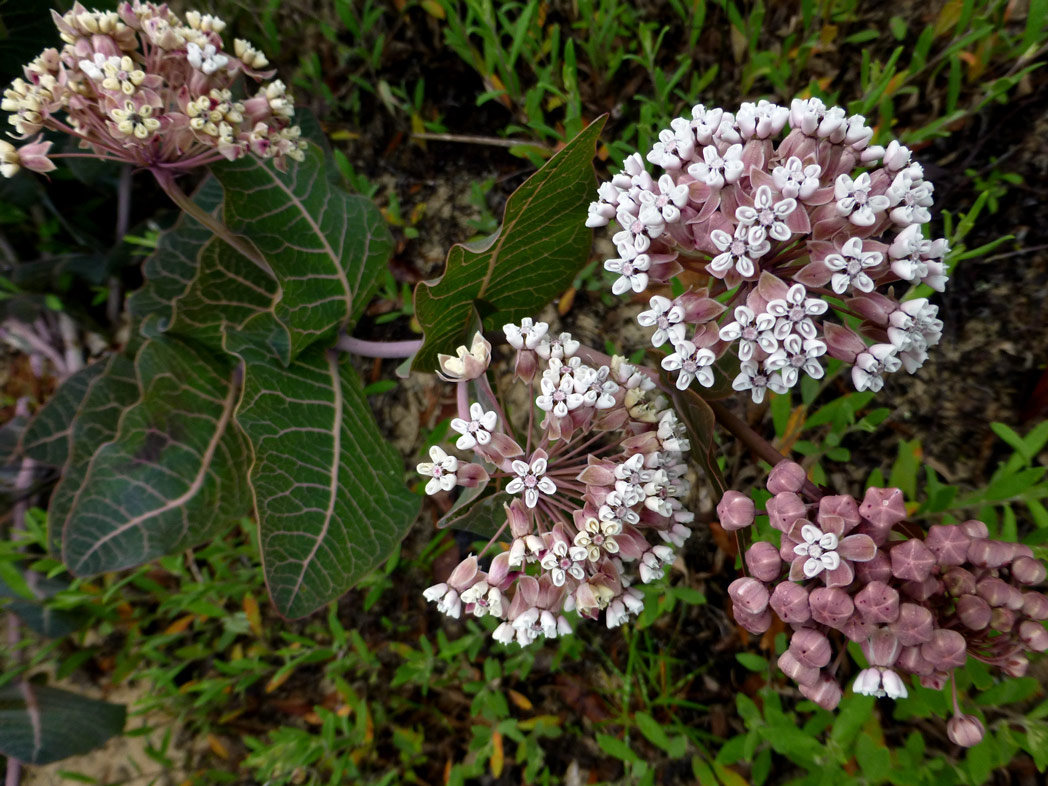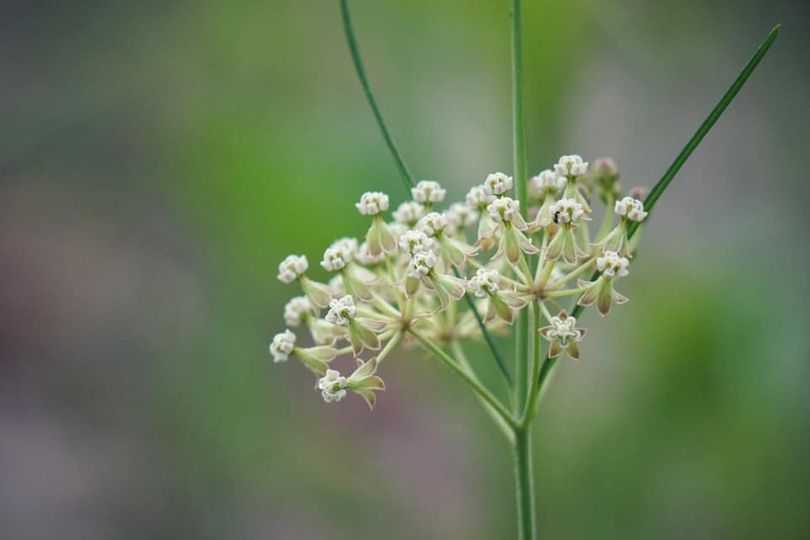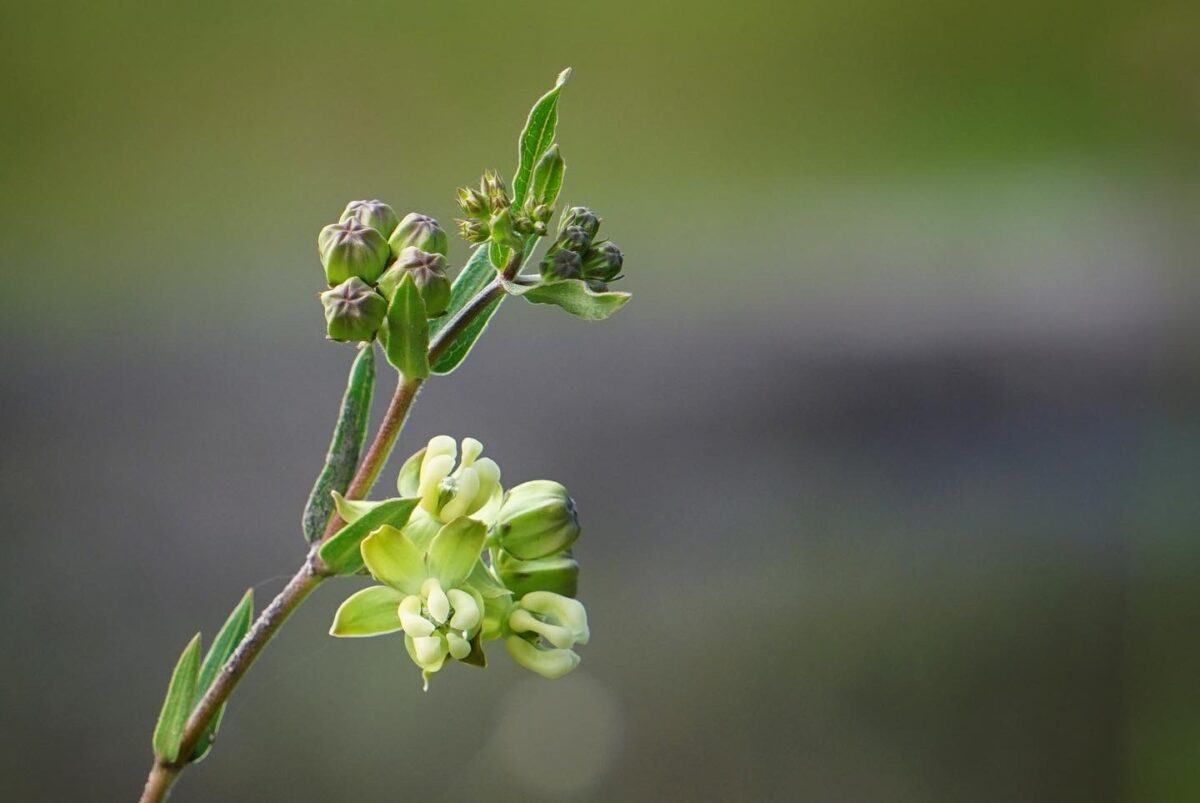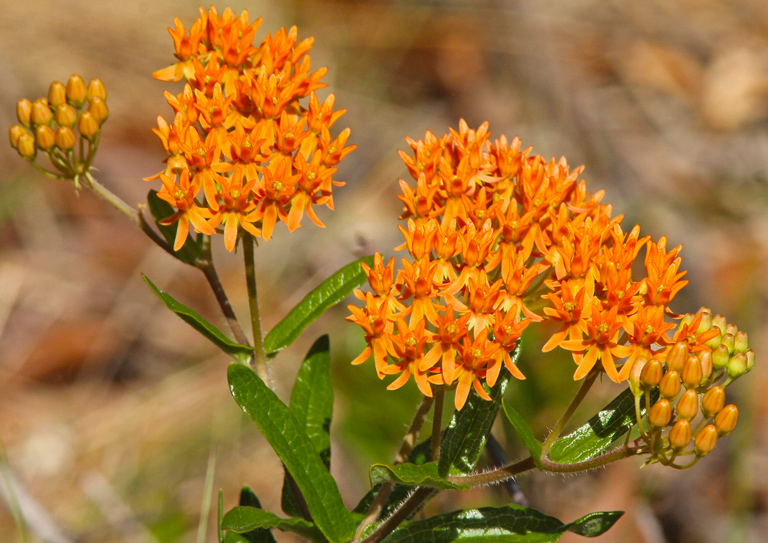Swamp milkweed
Pictured above: Swamp milkweed (Asclepias perennis) by Mary Keim. Click on terms for botanical definitions. View post as a PDF.
White swamp milkweed (Asclepias perennis) is an erect, herbaceous perennial wildflower that occurs naturally in floodplain swamps, marshes and wet ditches and along riverbanks. It typically blooms in late spring through early fall and attracts many pollinators. Like all members of the Asclepias genus, it is a larval host plant for Monarch, Queen and Soldier butterflies. The plant contains a milky latex that is toxic to most animals, but Monarch, Queen and Soldier caterpillars are adapted to feed on them despite the chemical defense. Learn more about Monarchs and Milkweed in Florida here. The flowers are an important nectar source for native bees, wasps and butterflies.
Flowers are white to pale pink and born in flat terminal or axillary umbels. Individual flowers have five reflexed corollas and an upright corona — a characteristic typical of milkweed flowers. The unopened buds have pink apices. One One inflorescence can produce up to 25 flowers. Leaves are dark green, elliptic to lanceolate, and glabrous. They are relatively long — between 3 and 5 inches — with short petioles and entire margins. Leaf arrangement is opposite. Seeds are flat, brown and born in smooth follicles that split open when ripe.
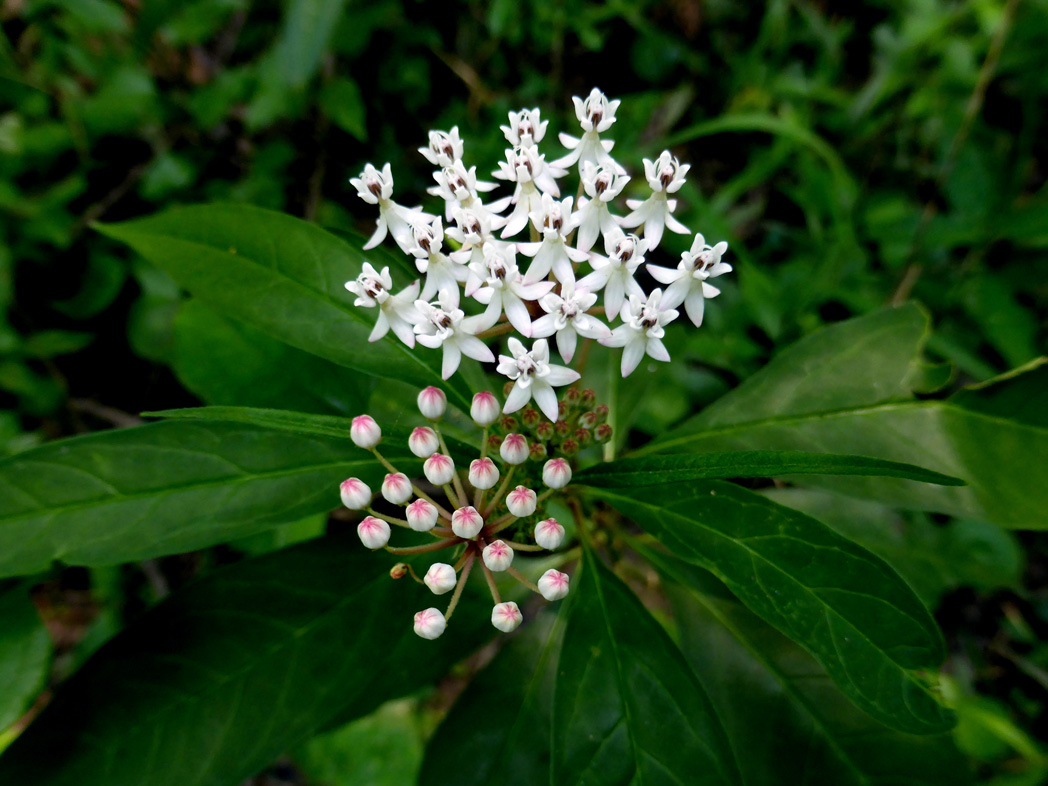
The genus Asclepias is named for Asclepius, the Greek god of healing, because some Asclepias species, such as A. tuberosa, are known to have medicinal properties. The species epithet perennis is Latin for “perennial.”
Family: Apocynaceae (Dogbane family)
Native range: Panhandle, north and central peninsula
To see where natural populations of Swamp milkweed have been vouchered, visit www.florida.plantatlas.usf.edu.
Lifespan: Perennial
Soil: Moist to wet, well-drained soils
Exposure: Full sun to partial shade
Growth habit: 1–2’ tall and almost as wide
Propagation: Collect seeds from plants once follicles split. Germinate on top of soil with a light mix barely covering seeds. Seeds can be stored in the refrigerator for a couple of months
Florida regions of landscape suitability: North, Central
Garden tips: Swamp milkweed works well in mixed butterfly and wildflower gardens planted along pond edges or similar moist sites. It also does well in a container. It can tolerate short periods of drought once established, but soil should be kept moist. Light annual pruning may be necessary to remove dead stems. White swamp milkweed is easy to propagate from seed. Seedlings may flower as early as three to four months.
Swamp milkweed is available from nurseries specializing in Florida native plants. Visit www.PlantRealFlorida.org to find a grower in your area.
Learn more about Swamp milkweed from the Florida Native Plant Society and the Institute for Regional Conservation.
For more information on other Asclepias species, see these resources:

